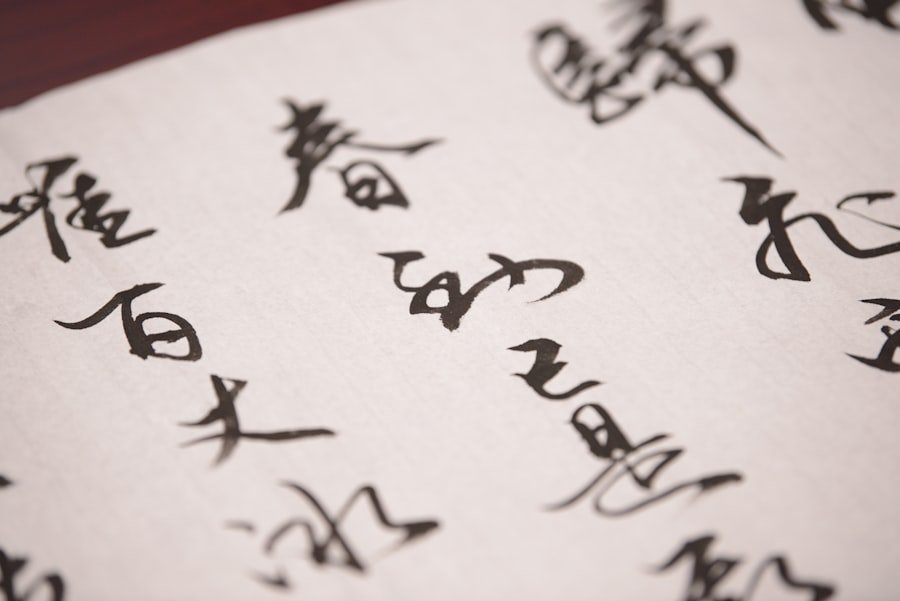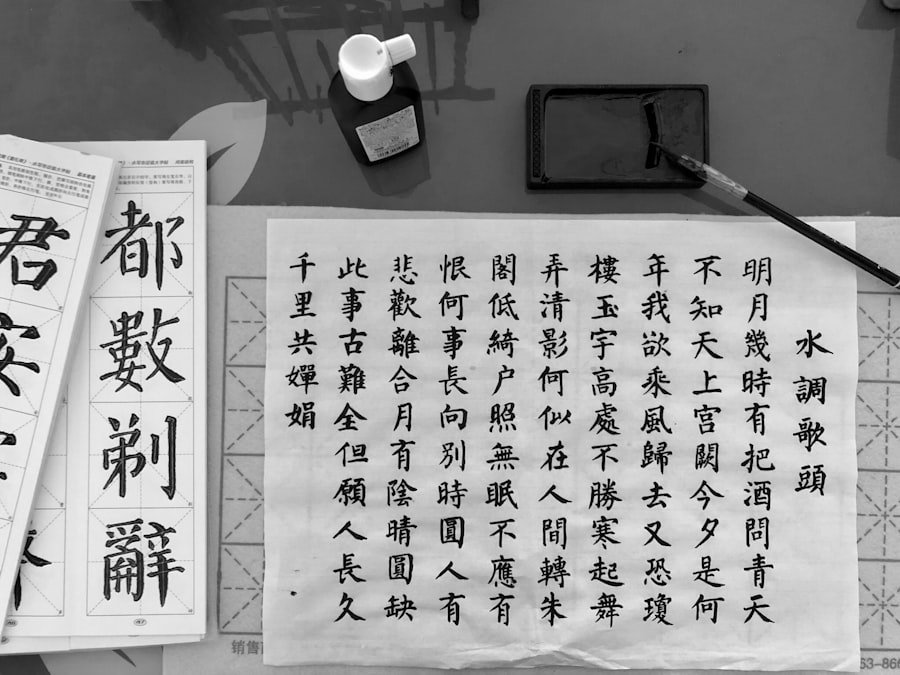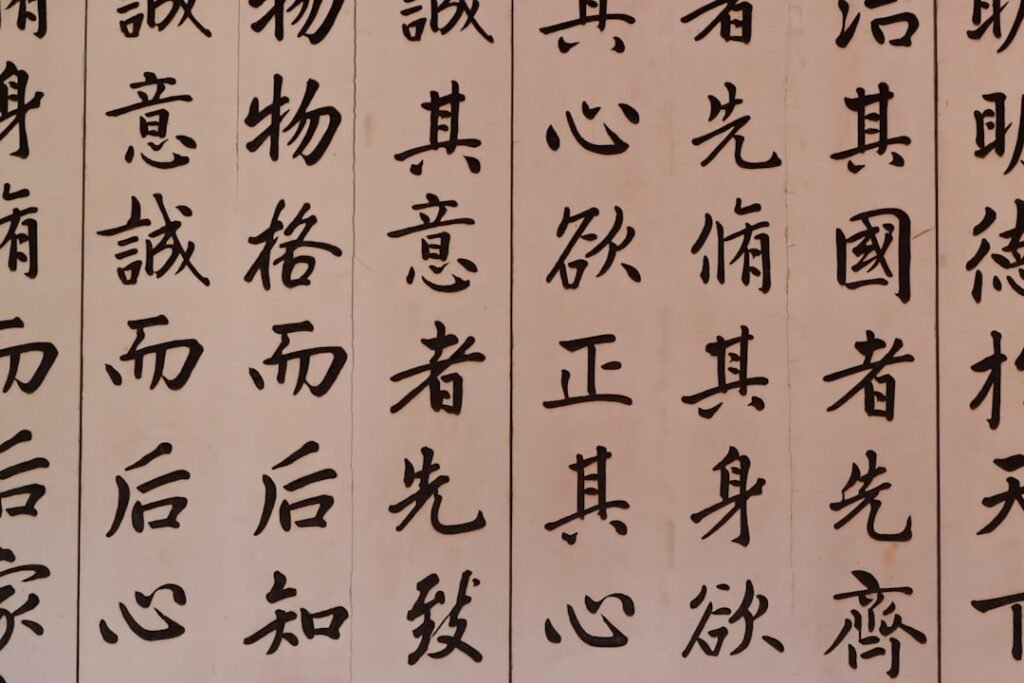One of the most pervasive myths surrounding Chinese calligraphy is the belief that it is an art form exclusively reserved for native Chinese speakers. This misconception stems from the idea that understanding the language is a prerequisite for appreciating or practising its written form. However, this notion could not be further from the truth.
In reality, Chinese calligraphy is an accessible art that transcends linguistic barriers. Individuals from diverse backgrounds can engage with this beautiful practice, regardless of their proficiency in the Chinese language. The beauty of Chinese calligraphy lies not only in the characters themselves but also in the philosophy and culture that underpin them.
Non-native speakers can immerse themselves in the rich history and traditions associated with calligraphy, allowing them to appreciate its significance beyond mere language. At institutions like the LC Chinese School in Oslo, students from all walks of life are welcomed to explore this ancient art form, fostering a community where cultural exchange flourishes. The school’s inclusive approach encourages learners to embrace their unique perspectives while developing their skills in calligraphy. Master the art of Chinese calligraphy. Enroll now at the LC Chinese School in Oslo.
Table of Contents
ToggleSummary
- Chinese calligraphy is not only for native Chinese speakers, anyone can learn and practice it.
- Learning Chinese calligraphy is not too difficult for non-Chinese learners, with dedication and practice, anyone can improve their skills.
- You do not need to have perfect handwriting to learn Chinese calligraphy, as it is a unique art form that focuses on expression and style.
- Chinese calligraphy is not just about writing characters beautifully, it is also about expressing emotions and capturing the essence of the written word.
- Chinese calligraphy is not a dying art form, it is still widely practiced and appreciated in modern times.
Myth: Learning Chinese calligraphy is too difficult for non-Chinese learners
Another common misconception is that learning Chinese calligraphy is an insurmountable challenge for those who do not speak the language. While it is true that mastering any art form requires dedication and practice, the belief that non-Chinese learners cannot succeed in calligraphy is unfounded. In fact, many individuals find that the process of learning calligraphy enhances their understanding of the language itself, as they become more familiar with the characters and their meanings.
At the LC Chinese School in Oslo, instructors are adept at breaking down complex techniques into manageable steps, making the learning process enjoyable and accessible. The school offers tailored courses designed specifically for beginners, ensuring that students receive the guidance they need to flourish in their calligraphy journey. With patience and perseverance, anyone can develop their skills and create beautiful works of art, regardless of their initial level of proficiency.
Myth: You need to have perfect handwriting to learn Chinese calligraphy

A prevalent myth surrounding Chinese calligraphy is the notion that one must possess perfect handwriting to embark on this artistic journey. This belief can deter many potential learners from even attempting to engage with calligraphy, as they fear their handwriting will not meet certain standards. However, it is essential to understand that calligraphy is not merely about achieving perfection; it is about expressing oneself through the fluidity of brush strokes and the rhythm of writing.
In fact, many renowned calligraphers began their journeys with less-than-perfect handwriting. The beauty of calligraphy lies in its ability to convey emotion and individuality through each stroke. At the LC Chinese School in Oslo, students are encouraged to embrace their unique styles and imperfections as they learn.
Instructors emphasise that the process of learning and self-expression is far more important than achieving flawless results. This supportive environment allows students to grow in confidence and creativity as they explore their artistic potential.
Myth: Chinese calligraphy is just about writing characters beautifully
While it is true that Chinese calligraphy focuses on the aesthetic presentation of characters, reducing it solely to a pursuit of beauty overlooks its deeper significance. Calligraphy is a profound art form that embodies cultural heritage, philosophy, and personal expression. Each stroke carries meaning and intention, reflecting the writer’s emotions and thoughts at that moment.
Thus, it transcends mere visual appeal and becomes a means of communication and connection. At the LC Chinese School in Oslo, students are taught to appreciate the philosophical aspects of calligraphy alongside its technical skills. They learn about the historical context of various styles and how these styles reflect different cultural values and beliefs.
This holistic approach enriches their understanding of calligraphy as an art form that encapsulates centuries of tradition and wisdom, allowing them to engage with it on a deeper level.
Myth: Chinese calligraphy is a dying art form
In an age dominated by digital communication and rapid technological advancements, some may argue that traditional art forms like Chinese calligraphy are becoming obsolete. However, this perspective fails to recognise the resurgence of interest in traditional arts among younger generations. Many individuals are seeking ways to reconnect with cultural roots and express themselves through time-honoured practices like calligraphy.
The LC Chinese School in Oslo plays a vital role in preserving and promoting this ancient art form by offering engaging courses that attract students of all ages. The school’s commitment to fostering a love for calligraphy ensures that this beautiful tradition continues to thrive in contemporary society. By providing a platform for learners to explore their creativity and connect with their heritage, the school contributes to the revitalisation of Chinese calligraphy as a living art form.
Myth: You need expensive materials to practice Chinese calligraphy

A common misconception about Chinese calligraphy is that one must invest in expensive materials to begin practising. While high-quality brushes, ink, and paper can enhance the experience, they are not prerequisites for starting one’s journey in calligraphy. In fact, many beginners find success using simple materials readily available at local art supply stores or even household items.
At the LC Chinese School in Oslo, instructors emphasise that creativity and dedication are far more important than the cost of materials. Students are encouraged to experiment with various tools and techniques without feeling pressured to invest heavily upfront. This approach allows learners to focus on developing their skills and finding joy in the process rather than being hindered by financial concerns.
Myth: Chinese calligraphy is only for older generations
The belief that Chinese calligraphy is an art form primarily appreciated by older generations is another myth that needs debunking. While it is true that many traditional practices have been passed down through generations, there is a growing interest among younger individuals who seek to explore their cultural heritage and express themselves creatively. Calligraphy has become increasingly popular among students and young professionals who appreciate its meditative qualities and artistic potential.
The LC Chinese School in Oslo actively encourages participation from individuals of all ages, creating a vibrant community where learners can share their experiences and insights. By fostering an inclusive environment, the school helps bridge generational gaps and promotes a shared appreciation for this timeless art form. As younger generations engage with calligraphy, they contribute to its evolution while ensuring its continued relevance in modern society.
Myth: Chinese calligraphy has no practical use in the modern world
Some may argue that traditional practices like Chinese calligraphy lack practical applications in today’s fast-paced world dominated by technology. However, this perspective overlooks the numerous benefits that engaging with calligraphy can offer individuals in various aspects of life. Calligraphy promotes mindfulness, patience, and focus—qualities that are increasingly valuable in our distraction-filled lives.
At the LC Chinese School in Oslo, students discover how practising calligraphy can enhance their overall well-being while providing a creative outlet for self-expression. The school’s courses not only teach technical skills but also encourage learners to cultivate a sense of presence and mindfulness through their practice. As students immerse themselves in this ancient art form, they find that it enriches their lives beyond mere aesthetics.
Myth: Chinese calligraphy is all about copying existing works
While copying existing works can be a valuable part of learning any art form, including Chinese calligraphy, it is essential to recognise that true mastery involves personal expression and creativity. Many beginners may feel intimidated by the idea of replicating traditional styles but should understand that this process serves as a foundation for developing one’s unique voice within the art. At the LC Chinese School in Oslo, instructors guide students through various styles while encouraging them to infuse their personalities into their work.
This balance between learning from established masters and exploring individual creativity allows students to grow as artists while honouring the rich traditions of calligraphy. By fostering an environment where personal expression is celebrated, the school empowers learners to break free from the confines of imitation.
Myth: Chinese calligraphy is only for those with artistic talent
The belief that only those with inherent artistic talent can succeed in Chinese calligraphy is a significant barrier for many aspiring learners. While some individuals may have a natural affinity for artistic pursuits, it is crucial to understand that skill development comes through practice and dedication rather than innate talent alone. Calligraphy is an art form that anyone can learn with time and effort.
At the LC Chinese School in Oslo, instructors focus on nurturing each student’s potential regardless of their initial skill level. The school’s supportive environment encourages learners to embrace challenges and celebrate progress rather than comparing themselves to others. By fostering a growth mindset, students discover that they can develop their abilities over time and create beautiful works of art through perseverance.
Myth: Chinese calligraphy is too time-consuming to learn
Finally, many individuals may shy away from pursuing Chinese calligraphy due to the perception that it requires an excessive amount of time to master. While it is true that developing proficiency takes dedication, it is essential to recognise that learning can be a rewarding journey rather than a burdensome task. The beauty of calligraphy lies not only in its end results but also in the process itself—each stroke offers an opportunity for reflection and growth.
At the LC Chinese School in Oslo, courses are designed with flexibility in mind, allowing students to progress at their own pace while balancing other commitments. The school’s emphasis on enjoyment and exploration ensures that learners find joy in their practice rather than feeling overwhelmed by expectations. By approaching calligraphy as a lifelong journey rather than a race towards mastery, students can cultivate a lasting appreciation for this exquisite art form.
In conclusion, dispelling these myths surrounding Chinese calligraphy opens up new avenues for individuals interested in exploring this ancient art form. The LC Chinese School in Oslo stands as a beacon for those seeking to engage with calligraphy—offering courses tailored for all levels of experience while fostering a sense of community among learners. By embracing diversity and encouraging personal expression, the school plays a vital role in ensuring that this beautiful tradition continues to thrive for generations to come.
Master the art of Chinese calligraphy. Enroll now at the LC Chinese School in Oslo.







